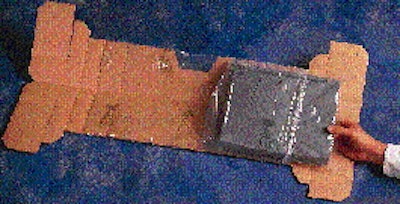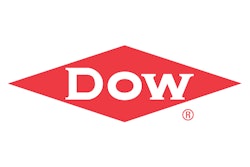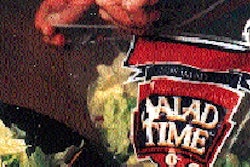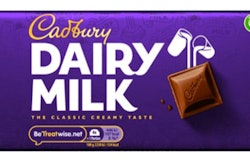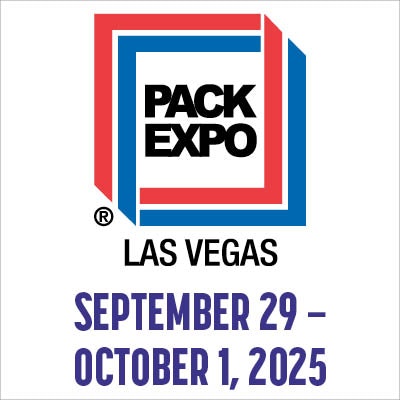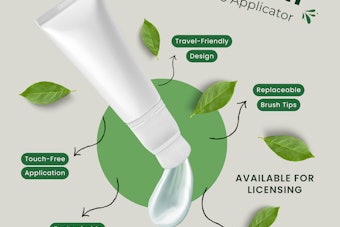A brand new type of suspension pack involving corrugated board and metallocene low-density polyethylene film has been performing well over the past year for notebook computer maker NEC Technologies, Roxborough, MA. Three years ago, NEC had been using polypropylene foam endcaps when damage reports forced packaging engineers to look into alternative materials for its notebook computers. It had originally selected a two-piece suspension pack that immediately eliminated damages and saved significantly in costs. But just over a year ago, NEC switched again, to a new one-piece suspension pack invented by Pack Age Enterprises (Osterville, MA). Continuing the benefits of the first suspension pack, the new package-dubbed Turtle Pak(TM)-saves an additional 20% in material costs over the previous suspension pack, in addition to turning in better performance numbers in shock testing. In the standard ISTA drop tests that NEC uses (adding an additional 6" of drop height for good measure), the Turtle Pak registers about a 25 G shock pulse to the product. Its previous suspension pack registered at least 35 G, according to Tom Askew, NEC's packaging engineer who handled the switch. PP foam was 50 G. The new package also passed vibration tests. Other benefits include more packages to a pallet. "It is one piece versus two piece so we're able to get that extra density on a pallet coming into the building, which helps reduce storage requirements," says Askew. There are 900 packages to a pallet versus 500 for the previous suspension pack and 60 for foam. Another benefit: packaging operators can work longer before having to stop the packaging line in order to bring in a new pallet load of materials. And like the previous suspension packaging, only one size is needed to fit NEC's four basic notebook chassis sizes. Metallocene for elasticity The package is received by NEC at its Fife, WA, packaging facility as a flat, long piece of 275#-test double-walled B/C-flute corrugated, with a center score down the length of the board. Around the board is a slightly loose 3-mil film sleeve that's made from Dow Plastics' (Midland, MI) Insite(TM) metallocene low-density polyethylene resin. Why metallocene resin? Pack Age's Chuck Jones, inventor of the Turtle Pak, says that while traditional LDPE has the necessary elongation, it lacks the elasticity and puncture resistance that's required for this application. "We looked at some EVA-modified LDPE resins, and although they worked fine, they just didn't give us the elasticity we were looking for to cover a range of products," says Jones. Pack Age turned to Dow's Insite metallocene resin technology. (The generic "metallocene" is also referred to as single-site catalyst technology, a reference to the way the resin is manufactured.) Metallocene resin-based film was chosen for its toughness, puncture-resistance, resiliency and high elasticity. Urethane, which also has these properties, is used on competitive suspension packs. "We wanted to keep it a polyolefin and yet we were looking for some of the properties that urethane has. Metallocene resins offered that." Jones says he's more comfortable with the recyclability of polyolefin-based film. The higher performance of metallocenes comes at a cost, however: Jones says the resin price is more than double that of regular LDPE. However, as more resin suppliers come out with metallocene offerings, he expects the cost to decrease. The film, which had previously been sourced elsewhere, will now come from Union Camp's (Wayne, NJ) flexible packaging division. Union Camp's corrugated division also makes the board, and thus the company will become the exclusive manufacturer of this package. For NEC's application, Precision Packaging (Tualatin, OR) applies the film on the corrugated (labor which can as easily be done by the packager for a cost savings) and distributes the package to NEC. In use, the operator folds the board lengthwise down the center, which forms a "V" shape and causes the film to loosen considerably. The operator then inserts the notebook computer into the temporary cavity and folds back the board until it's straight again. The film grows taut over the computer, which is now trapped in the center of the board between the film and the surface of the corrugated. The two ends of the corrugated are folded back underneath the main surface of the board, and then back above the board, in essence forming a pair of shock absorbers for bottom drops, as well as corner reinforcements above the surface of the package. The entire assembly fits snugly inside a corrugated shipper. (A "pizza box" containing manuals and accessories is placed underneath the Turtle Pak.) The main protection, of course, is the film, which keeps the computer hugged to the flat surface of the board. Interestingly, the notebook computer is not absolutely immobilized within the package; a good shake reveals that it's slightly loose and is able to shift around. "It's intentional," explains Askew. "What we find is that's where you get the real good results in dropping. The computer decelerates in the plastic as it moves, giving it a nice soft landing. You get a very low shock, and that shock is spread out over time." Constant training Since NEC relies on a lot of temporary labor at its packaging facility, he does say that continual training is required for new workers since understanding how the pack is assembled is not immediately apparent. Indeed, he admits that the previous suspension pack, though two pieces, was quicker and easier to assemble, taking about 30 seconds versus a full minute for the Turtle Pak. But the new pack doesn't slow production, since computers come off the manufacturing line every 90 seconds. There's just less idle time in between computers. "We use up that time to take advantage of the material cost savings," says Askew. Considering the tough, double-wall corrugated that must be folded, are there concerns about repetitive stress injuries? "It hasn't surfaced as a problem," says Askew. He does say that if product volume increases substantially, NEC would look into an automated Turtle Pak packaging system that Pack Age says it's able to supply. A final minor issue with the new package is consumer education. Despite package warnings to the contrary, some consumers cut open the film upon receiving the computer, making the package worthless in the event a return shipment is required. "They get so excited that the first thing they reach for is the knife and they read the instructions afterward. It's certainly reusable for consumers that disassemble the pack correctly," says Askew. "But it's the ones who cut it first and ask questions later that we have trouble with." Both the film and the corrugated are completely recyclable with their respective waste streams, claims Pack Age. The two components are not glued, and hence are easily separated. Overall, Askew says the package has performed well and the switch fits in with his department's mandate to keep a vigilant eye on materials expenses. "Our goal is to reduce packaging costs each year," he says. After reducing costs while improving performance for three years running, how much further can NEC go? "We're always in the business of evaluating everything new that comes along," says Askew. "But Turtle Pak, as I see it, is just about the pinnacle you can reach at this point."
